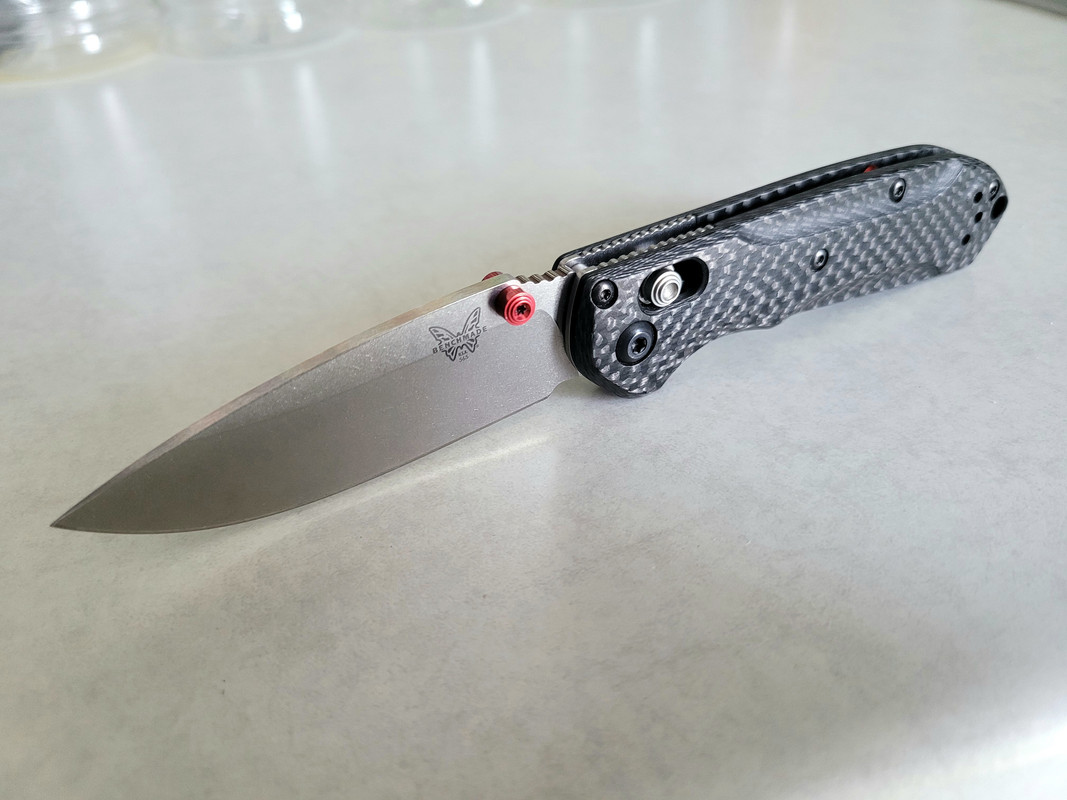GovernorJosh
Gold Member
- Joined
- Dec 18, 2022
- Messages
- 1,236
Joe, this bad boy looks wicked sharp! What's your DPS?
The BladeForums.com 2024 Traditional Knife is ready to order! See this thread for details:
https://www.bladeforums.com/threads/bladeforums-2024-traditional-knife.2003187/
Price is $300 $250 ea (shipped within CONUS). If you live outside the US, I will contact you after your order for extra shipping charges.
Order here: https://www.bladeforums.com/help/2024-traditional/ - Order as many as you like, we have plenty.
Joe, this bad boy looks wicked sharp! What's your DPS?
I've got a lot of way more expensive, extremely well made, beautiful knives, many built with high end materials, with great action, and a few that are quite rare, but this well-worn old 710 in many ways could be my favorite knife. The 710 is a great pattern and I have another stock in new condition (pretty much a drawer queen), and my 710-1401 in M390 with custom, holey Arizona Ironwood scales that I love, but this is the one that gets almost all the ride. I put a lot of work into restoring it, put a lot of work in with it, and a lot of wear on it, all of which makes it very dear to me.
View attachment 2928481
View attachment 2928482
View attachment 2928483
You have some seriously nice knives, my friend. Always a pleasure to look at your photos.
This particular knife shape tickles my fancy though.
Thank you, friends! I really like this knife too.I'm loving those kokopelli(s)!


















Looks like a great trip.I want to show a photo from our walk
I have long wanted to go to Fort Ino, near the city of Zelenogorsk (Terijoki in Finnish). First, we stopped in the city itself to see another of the churches built by Stenbeck.


Well, then we went to the fort itself, or rather, what was left of it.
The fort never managed to fulfill its purpose. Built in 1911-12, the fort was supposed to destroy everything that sailed into the Gulf of Finland without the permission of the Russian emperor. Then the revolution of 1917 happened. In May 1918, it was blown up by retreating units of the Red Army, and handed over to the Finns under the terms of the peace treaty with them.
We began our inspection from the line of fortifications that protected the fort from the land side.
Kilometer-long fortified defense lines:


With pillboxes and firing points.

And strawberry thickets.

The caponiers themselves have practically not survived, but the tunnels connecting them underground have survived.

Then they moved to the "heart" of the fort. Two batteries of four 12-inch (305 mm) guns. Their firing range is 24 km. Which completely covered the Gulf of Finland in this area. The guns of one of the batteries could rotate 360 degrees, and if necessary, fire at those advancing from the land.

The daughter stands on the site of the blown up gun turret:

A railway ramp ran along the batteries. For installing guns and transporting ammunition.

On the way to the outer side of the fort (from the sea) we came across a locally improved bomb shelter/shelter for a hundred people.

The outer fortifications are striking in their characteristics. 2 batteries of 152 mm with four guns, 1 battery of 8 guns of 254 mm caliber, and one battery of 8 howitzers of 180 mm.



The thickness of the defensive structures is impressive:

At this point, it was decided to stop the inspection. And go to the beach.


And after returning, I got a well-deserved beer and hot wings from KFC.


